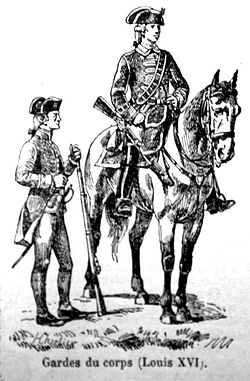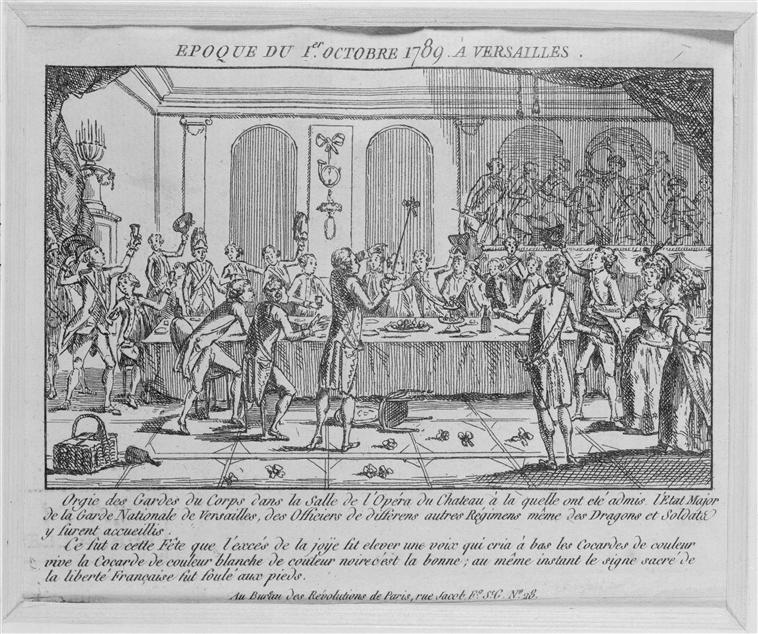The royal guards were divided into two categories: the indoor guards and the outdoor guards. Those who served as outdoor guards came from either an infantry of Swiss Guards or French Guards known as the Garde du Corps. They would normally be dispatched from their regiments to Versailles where they would stand guard for one week before returning to their infantry. But naturally here was another piece of etiquette which meant that the French Guards had the right to protect the area immediately outside the bedroom of Louis XIV.
The indoor guards consisted of both Swiss Guards and the Garde du Corps. The Swiss Guards were armed with halberds with the royal arms on the blade and dressed in dark blue and red uniforms. These Swiss Guards were known as the Cent Suisses or the Hundred Swiss; they would serve the royal family until it was forced to leave for Paris in 1789. At the end of Louis XIV's reign the number of guards posted at Versailles amounted to 2960. Both indoor and outdoor guards were housed underneath what is now the Minister's Court. Once Mare Leszczynska walked by and happen to see a guard sleeping; after that it became commonplace that the guards (who slept on camp beds) were screened by screens. The right to obtain personal guards was a privilege reserved only for the King, the Queen and the Dauphin. The King's personal guard consisted of somewhat near 400 soldiers up until it became too expensive. Naturally not all of these guards could be housed on the grounds of Versailles itself but were housed in barracks. Louis XV had had wooden barracks erected for his French gendarmes on the place d'armes; this building was demolished in 1831 long after the actual guards had vanished from sight.
Among other duties it was the guards' responsibility to open and close the many gates found around the château; they had the right to remove any weapon of the visitors that might be used to kill or harm the King. Whenever a royal prince passed they were to present arms and it was equally required that they knew who held the title of Duc because whenever such a one passed the guards were to stamp their feet twice. Furthermore they were to guard the Masses said in the chapel and escort the monarchs to and from there. At all times 12 guards would be placed in the Queen's Guards' Room; these were part of the indoor guards. At night Scottish guards - eventually there were very few actual Scots in the regiment - took over and made sure that the royal palace was locked up as far as possible.
Eventually it was to be Marie Antoinette who broke protocol when she even invited her personal bodyguards to dance in her balls which had never been seen before. It should be said that it was not uncommon for higher ranking members of the royal guards formed friendships with the courtiers and some were even known to have had liaisons with ladies of the court. In the end - when most royal guards had abandoned the royal family - it was a wounded but still loyal royal guard who hammered on the door of the Queen's chamber to warn her that the palace had been stormed. It was he who saved the Queen's life by giving her opportunity to escape before he was brutally killed himself by the raging mob.
 |
| French guards during Louis XVI |
 |
| Banquet of the guards upon the arrival of the Flanders Regiment just four days before the mob attacked Versailles |
%20Gardes%20Suisses%201789.jpg) |
| Model of a Swiss guard as he would have looked at Versailles |

Bonjour! Do you happen to know at what times the royal guards opened and closed the gates of Versailles?
ReplyDeleteMerci beaucoup!